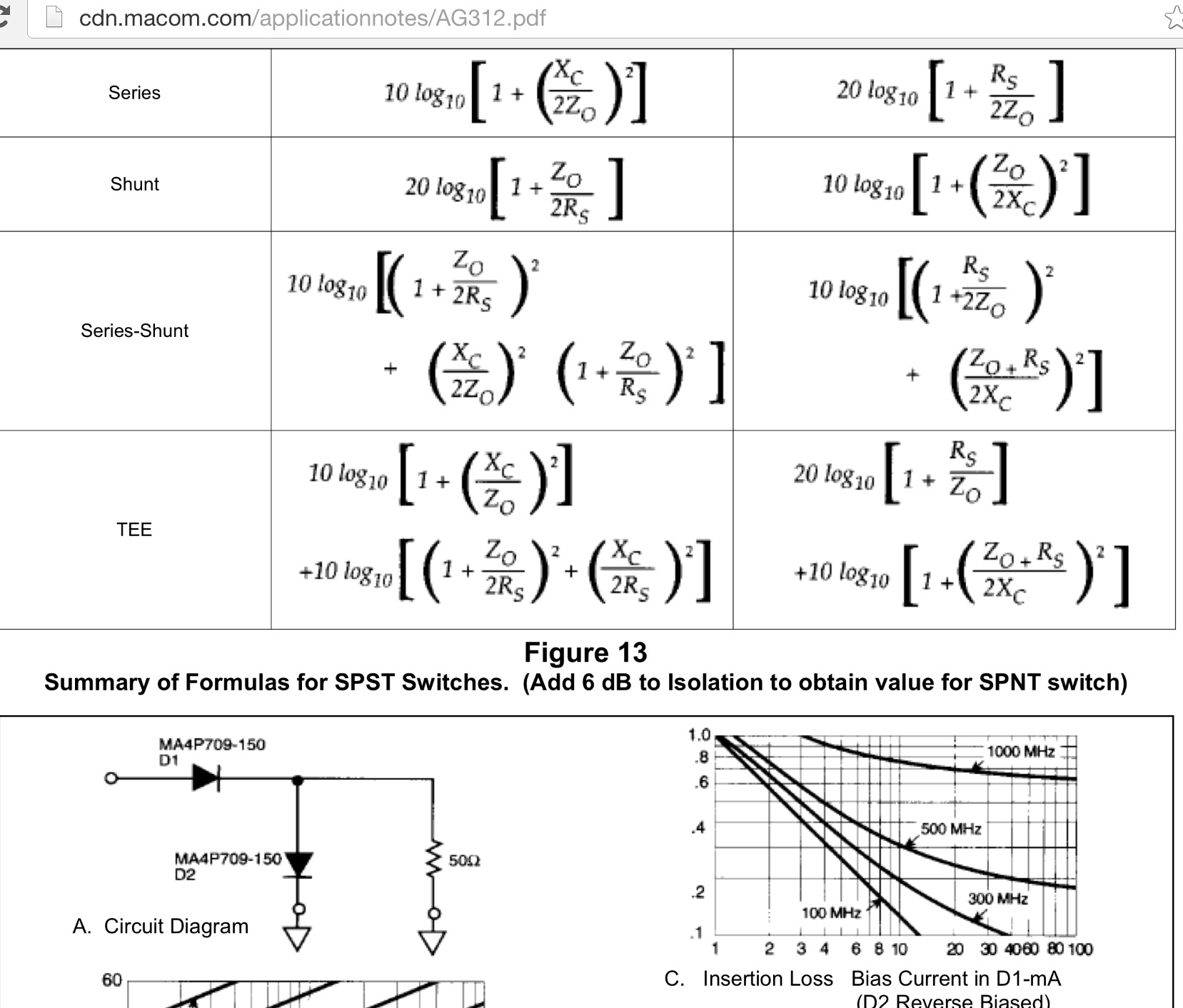Follow along with the video below to see how to install our site as a web app on your home screen.
Note: This feature may not be available in some browsers.
2 diodes in series is only for voltage ratings(mostly to drop voltage by ~1Volt).Isolation won't be different for single diode and 2 diode in series.
6dB is a pretty big difference.yes two in series will have higher isolation (3 or 6 dB, I forget which), but that is not enough to matter. It would be like the difference in insertion loss of a 0.1 pF series capacitor vs a 0.05 pF series capacitor. i.e. not much difference.
I don't see why turnoff time would have to suffer, so long as you are pulling the same reverse recovery current out of the pair.Trying to use a simple bias structure that only treats both diodes as a pair will give you a horrendously long turnoff time.
I don't see why turnoff time would have to suffer, so long as you are pulling the same reverse recovery current out of the pair.
Okay so you would quickly reach a point where one diode is depleted and fully off, so you quickly get the isolation from one diode. But it takes longer to get the isolation from the second diode. Makes sense I guess.because the two diodes are not perfectly matched, one will turn off quicker than the other. That leaves the other diodes with charge still trapped in the intrinsic region basically with "nowhere to go". Current can not flow thru the turned-off diode, so the diode still on sits there partially turned on still. Eventually those charges recombine, but do so slowly (on the order of tens of microseconds).
So you can turn them on fast, but they are slow to turn off.
